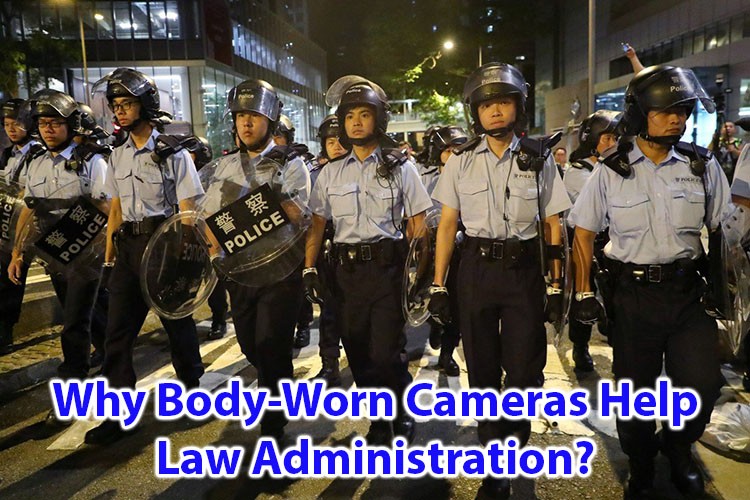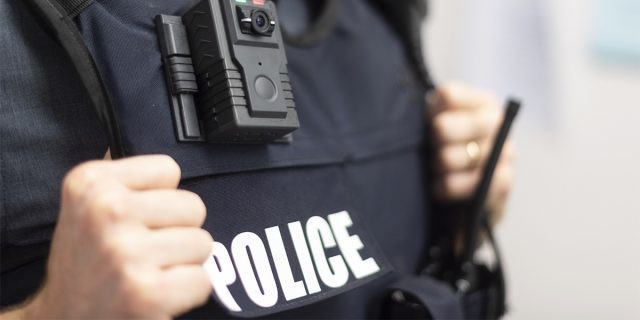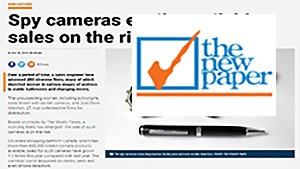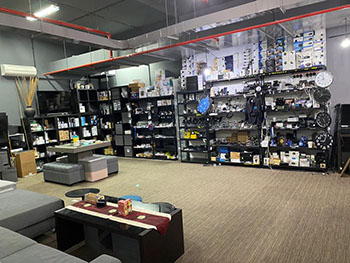Why Body-Worn Cameras help Law Administration?
Technology is defined as the set of skills, knowledge, or skills used through artificial objects to reach a certain end; But in the field of security, what is that end? It seems obvious that reducing crime, however, his invention has not always been linked to this end.
Since the beginning of history, the human being has sought to cross the impediments of ignorance and this has led to basic technological milestones, but essential for subsequent progress, such as the wheel, metallurgy, etc.

https://www.google.com/search?q=How+Body-Worn+Cameras+Aid+Law+Enforcement%3F&sxsrf=ACYBGNQ_Bq_wwzHBi43xMZHQrOvd1DO00A:1571122539985&source=lnms&tbm=isch&sa=X&ved=0ahUKEwjzx5PH153lAhXLP48KHQcZDe4Q_AUIFSgE&biw=1533&bih=801#imgrc=e4wJDFebyRPtCM:
Body cameras are recorders designed to be worn on a law enforcement officer’s uniform, providing an audio-visual recording of events from the viewpoint of the wearer, in the exercise of its functions.
Law enforcement agencies use body video cameras (CVC) to record sounds and images in real-time during incidents and interactions with members of the general public, witnesses and suspects to use them thereafter as part of investigations and to gather evidence. Records made with a CVC add value to the evidence collected; they should not be seen as the sole source of evidence.
The HVAC system consists of a small camera attached to a policeman’s uniform or sunglasses or worn as a helmet, which records sounds and images during the police officer’s interactions with the public. The recorded digital information records events from the officer’s point of view in the performance of his duties.
The CAC is designed to openly record records that will provide a reliable, accurate and unbiased record of incidents involving uniformed members of the Law enforcement agencies. The purpose of this practice is to enhance transparency and accountability should questions or concerns arise or if charges should be laid as a result of an incident, and to provide evidence for prosecution if an incident occurs. had to be accompanied by criminal acts.
The Law enforcement agencies conducted a feasibility study on the use of the CVC that included a thorough review of complex privacy issues and legal or policy issues. CAC equipment and technology are evolving rapidly, and the agencies continually review their policies, procedures, and equipment to ensure that the most effective law enforcement practices are used. This aspect of the work includes research and pilot projects to test new technologies. The goal of the Law enforcement agencies is to provide front-line members with advanced technology and social media tools to enhance their ability to respond to new realities while ensuring the safety of the public and the police.
The tests also accurately identified the CAC’s characteristics to better assess the Law enforcement agency’s needs through the repetition of incidents involving the use of force. Based on the evaluation criteria and parameters provided by the repeatable scenarios, it was possible to focus on specific variables related to all aspects of the use of physical force to determine the best place to place the camera on the police officer performing his duties and on the characteristics that the CVC must possess to meet the requirements for the collection of evidence.
Police services use relatively new technology to keep the police and members of the public with whom they interact accountable for any action. The CVC provides greater transparency and accountability for all concerned and presents a subjective picture of what police officers encounter often intense and extremely dynamic situations. Projects such as this one can assess and determine the added value of new police tools. As a modern police force, the Law enforcement agencies constantly researches and evaluates new technologies to fulfill its mandate to protect Civilians. The goal of this approach remains the same – to provide Law enforcement agencies members with the tools they need to overcome the challenges associated with the current policing environment in an ever-changing environment.
Privacy risks were identified during the Privacy Impact Assessment (PIA), and the following recommendations were made to mitigate them:
- The Law enforcement agencies will develop a policy to ensure the retention, disposal, and storage of records made through the CVC;
- The Law enforcement agencies will not record all of its interactions and conversations with members of the public;
- When agencies members use the CVC in the legal framework of their duties, they will do so openly
- As far as tactically possible, Law enforcement agencies members will advise citizens when they are filmed;
- At the end of each shift, all video footage will be uploaded to agencies approved secure storage device for disclosure, retention, and disposal;
- Citizens can ask to see their personal information. Requests for access to CAC registrations made under the Access to Information Act and the Privacy Act may be submitted through the ATIP web page.
- The use of CACs will be communicated to the general public, particularly in detachments where cameras are deployed, and internally to Law enforcement agencies members to inform them of policies and best practices in this regard.
CACs are used to gather evidence for criminal investigations and to fulfill the Law enforcement agencies commitment to building relationships by promoting safe homes and safe communities across the country. The use of CACs will also support the Law enforcement agencies’s mandate to prevent crime, investigate offenses, maintain peace and order, enforce laws, and contribute to national security. , to ensure the safety of government officials, visiting dignitaries, and members of foreign missions, and to provide essential operational support services to other law enforcement agencies. When interacting with the public, members will use CACs at their discretion, depending on public interaction policies. The Law enforcement agencies are committed to protecting the personal information collected and continually reviewing its policies and procedures to ensure that they comply with federal laws.










